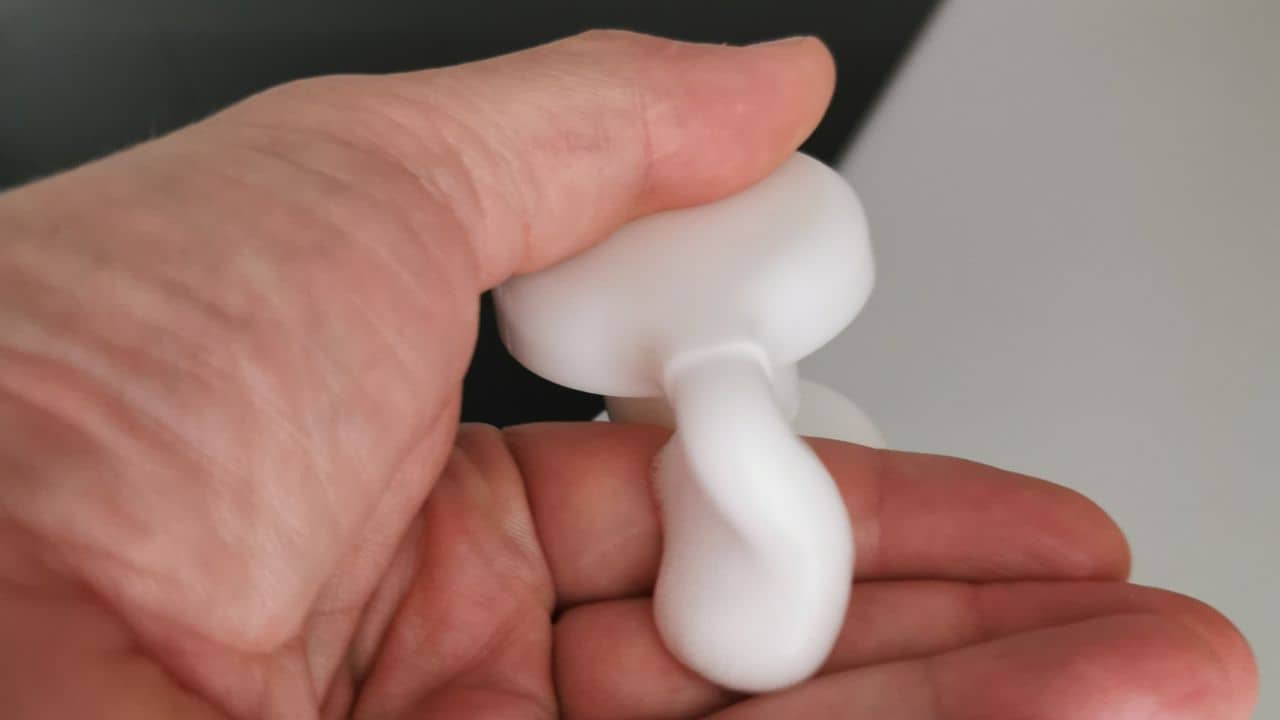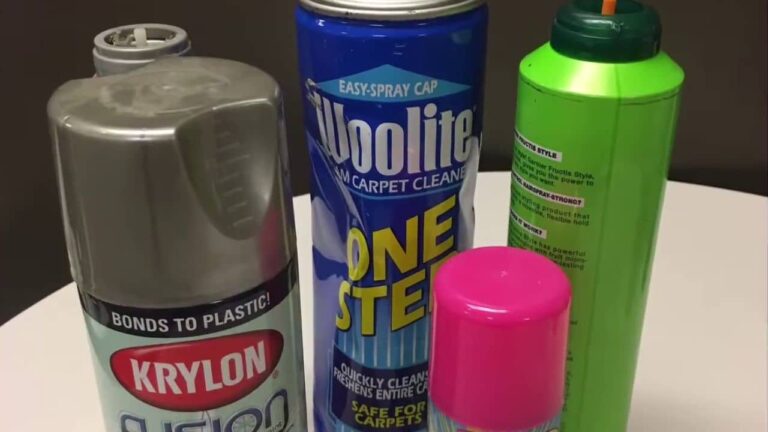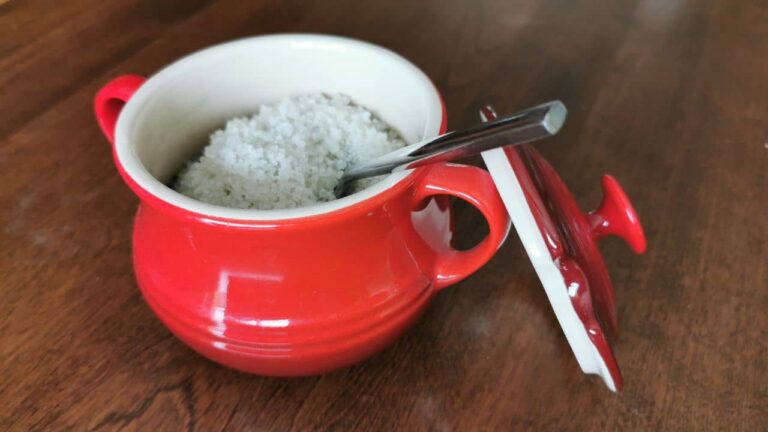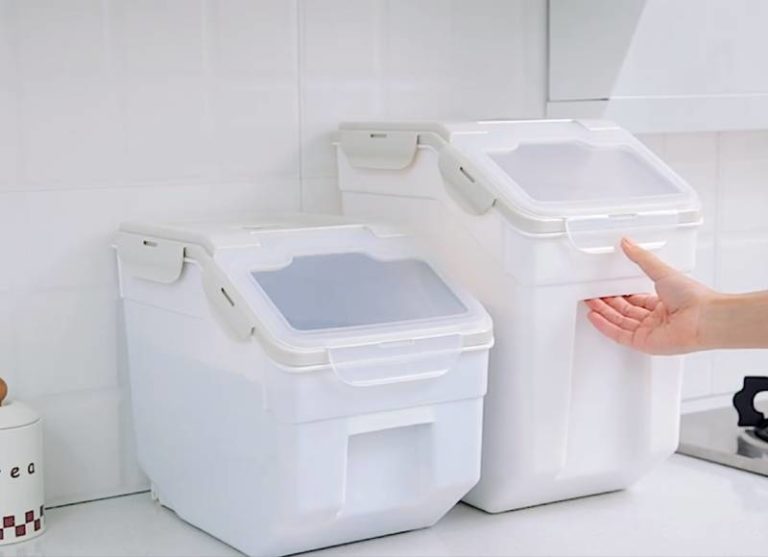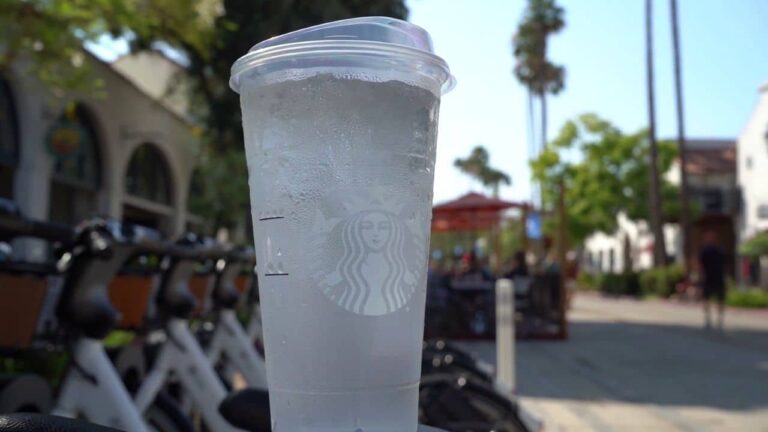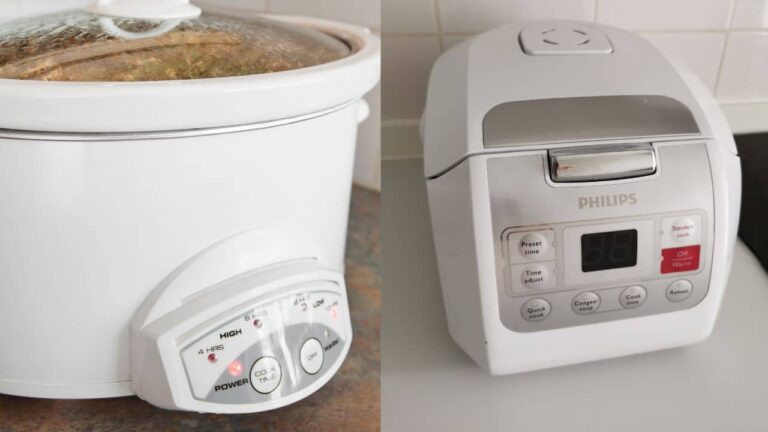Foaming Soap Dispensers: How They Work and the Benefits of Using Them
Foamy soap dispensers are becoming increasingly common in public and business restrooms around the globe. These specialized dispensers contain foamy soap to scrub your hands clean easily. However, I’ve always been interested to know how these dispensers produce their airy foam. Well, it’s time to find out!
A foaming dispenser operates with two chambers, one containing soap and the other pushing air into the dispensing unit. When you push down on the foam dispenser, both the chambers work simultaneously to produce an airy foam to help scrub your hands.
Foamy hand soap is nothing but a type of liquid soap. The main difference is that foaming hand soap is used with specialized dispensers. These soap dispensers are meant to be used without being refilled, while other permanent solutions (used in public places) are refilled regularly.
How a Foaming Soap Dispenser Works
I’ve often seen automatic or touchless soap dispensers in public spaces and have remained intrigued by how they operate. When I lifted the curtains, I found that they were actually using motion sensors or detecting the infra-red heat energy, which is dissipated from our hands.
When the soap dispenser senses a hand beneath, it starts operating just like a regular foaming soap dispenser, mixing air with regular soap and discharging it. The soap-discharge quantity in these automatic dispensers is fixed, and they’re built to be easily refilled whenever the soap’s finished.
How Does the Pump Work?

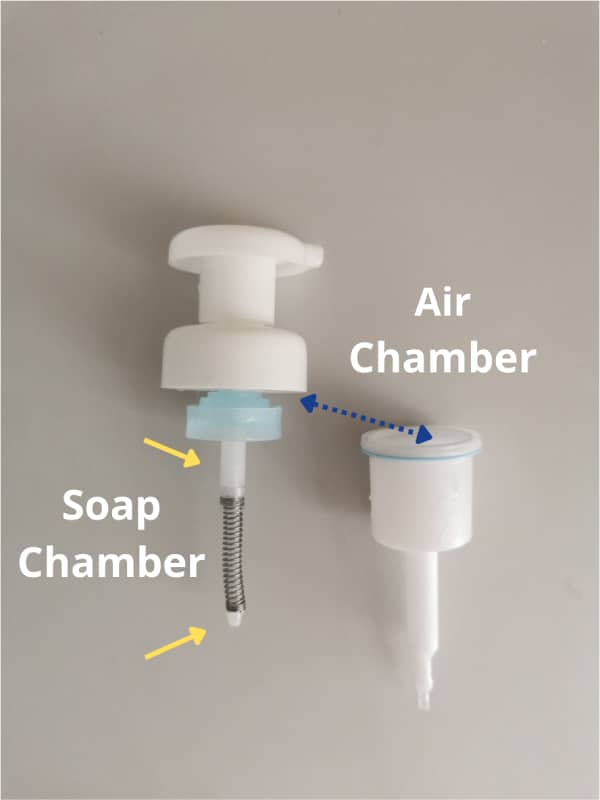
Liquid Vs Foaming Soap Dispenser
Many people prefer the feeling of foamy soap and find it simpler to rinse away. The lather created by a foaming soap dispenser means that people have to spend less time lathering up their hands and rinsing after each handwashing session.
However, foaming hand soap may not be as effective as liquid soap in terms of germ-killing ability since each pump of the special soap dispenser contains less detergent than a pump of liquid soap. This is because the dispensed soap includes a considerable amount of air bubbles to give it a foamy texture.
Can I Put Foaming Hand Soap Inside A Regular Dispenser?
If you’ve been thinking about adding foamy hand soap to a regular dispenser, you should know that foaming hand soaps require a specialized air pump. Furthermore, there are two chambers in a foamy soap dispenser. One chamber contains the soap, while the other contains air and valves.
When applying pressure to the pump head, the air is pushed inside the dispensing chamber to mix up with the soap. Air is pushed into the dispensing chamber when pressure is applied during usage. Since regular dispensers are built differently, using foaming soap won’t give you a bubbling soap discharge.
How To Add Foaming Hand Soap To A Regular Dispenser
If you want to replace your foaming soap dispenser with a regular one, you’ll need to create a diluted soap and water combination and allow it to absorb air before adding it to the dispenser.
If you’re using a regular soap dispenser, combine the soap with water in a 1ml to 3ml ratio, then gently mix it by twisting the soap dispenser. You will be able to get a bubbling soapy mixture, but there’s no guarantee that it’ll be the same as an original foaming soap.
How To Create Foaming Soap At Home
While you can buy foaming soap in the market, creating it at home is relatively simple and fun. All you need is a foaming soap dispenser, castile soap, essential oil, and carrier oil. Once your arsenal is ready, let’s get to work:
Step 1: First, fill your foaming soap dispenser with two-thirds to three-fourths water. Make sure your dispenser is clean before adding water, especially if you’re reusing a soap dispenser.
Step 2: Next, add two tablespoons of castile soap into the mix. Castile soap is biodegradable and non-toxic, making it an excellent choice for creating a homemade foaming hand soap.
Step 3: Now add ten drops of any essential oil. You can choose essential oils based on their aroma or antibacterial capabilities, such as tea tree, eucalyptus, or lemongrass oil. I find rosemary and lavender to be my favorite out of the lot.
Step 4: Top off the mixture with a tablespoon of any carrier oil, such as olive, palm or coconut oil. The carrier oil will help in making the soap more moisturizing.
Step 5: Finally, mix all the ingredients for 30 seconds. After you’re done, you’ll have a ready-to-use handmade foaming soap with your favorite scent and natural ingredients.
Save the Environment with Foamy Soap

Foaming hand soap is a great choice when you consider its environmental impact. Since it is a diluted version of liquid hand soap, it uses less soap in each hand washing session, which has a lot of advantages. Here’s a look at a few of them:
Less Likely To Clog Drains
Foaming soap is lighter and less likely to block drains, which would require frequent cleaning with strong chemicals and detergents. With the earth’s health deteriorating by the day, using foaming soap is an excellent step toward leading a natural, environmentally-friendly life.
Water Conservation
Water conservation is another environmental advantage brought about by using your bubbling soap. According to industry research, people who wash their hands with foamy hand soap use 16% less water to rinse their hands than those who use conventional liquid soap. This means that by simply changing your soap, you’ll reduce your personal water consumption by 58.4 gallons a year!
Easily Biodegradable
Foaming soap does not depend on chemicals to make lather. The natural lathering is caused by forced air, allowing soap to biodegrade quicker than regular liquid soap.
Furthermore, foamy soap provides more hand washes per package, decreasing packaging and transportation effects on the environment as well. You’d be living a more environment-friendly life without even realizing it!
Drawbacks Of Foaming Soap
Although foam soap has certain benefits compared to liquid soap, it turns out that the latter is far more efficient at destroying germs. Studies I’ve read have pointed out that liquid soap reduced germs on the hands significantly compared to my bubbling mixture. Don’t get me wrong, foaming soap does remove bacteria wherever it’s applied, just not as much.
Liquid soap is more effective for two reasons.
☞ One, the soap comes out without being lathered, meaning you can lather your hands, providing more coverage to the soap.
☞ Secondly, liquid soap dispensers discharge more soap in a single pump, making them more apt at ridding bacteria. Foam soaps, on the other hand, are injected with air and produce far less soap in comparison.
Conclusion
Foaming soap dispensers are built in a special way to aerate the soap which is discharged, ultimately causing the bubbling texture. These soaps aren’t only beneficial for the environment but also pretty cost-effective.
Now that you know everything about foamy soaps and their workings, it’s time to scrub your hands clean!
Sources

